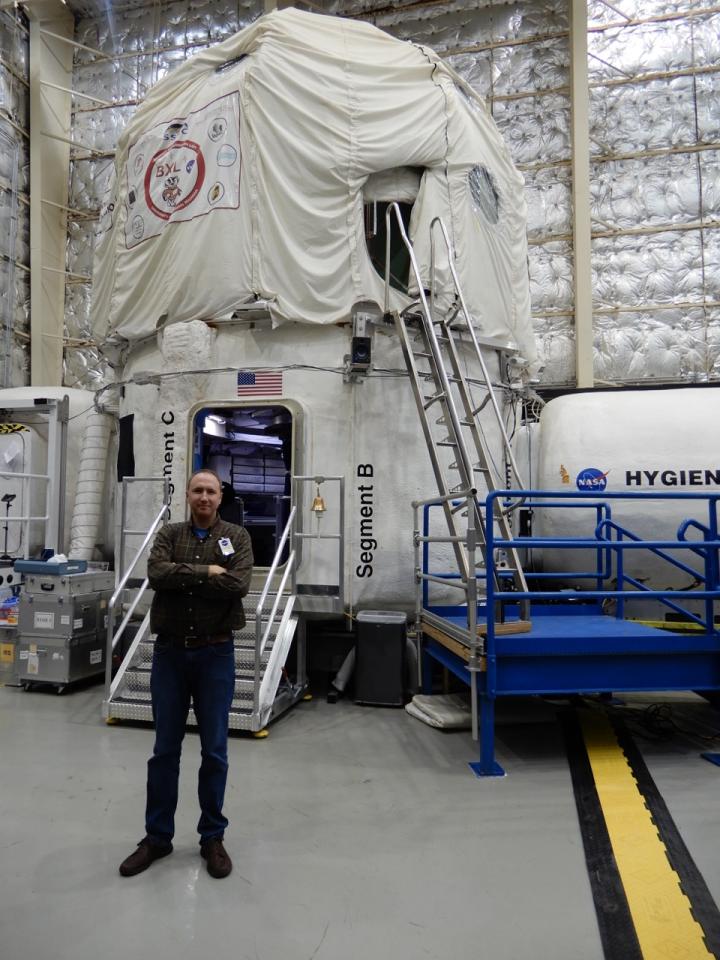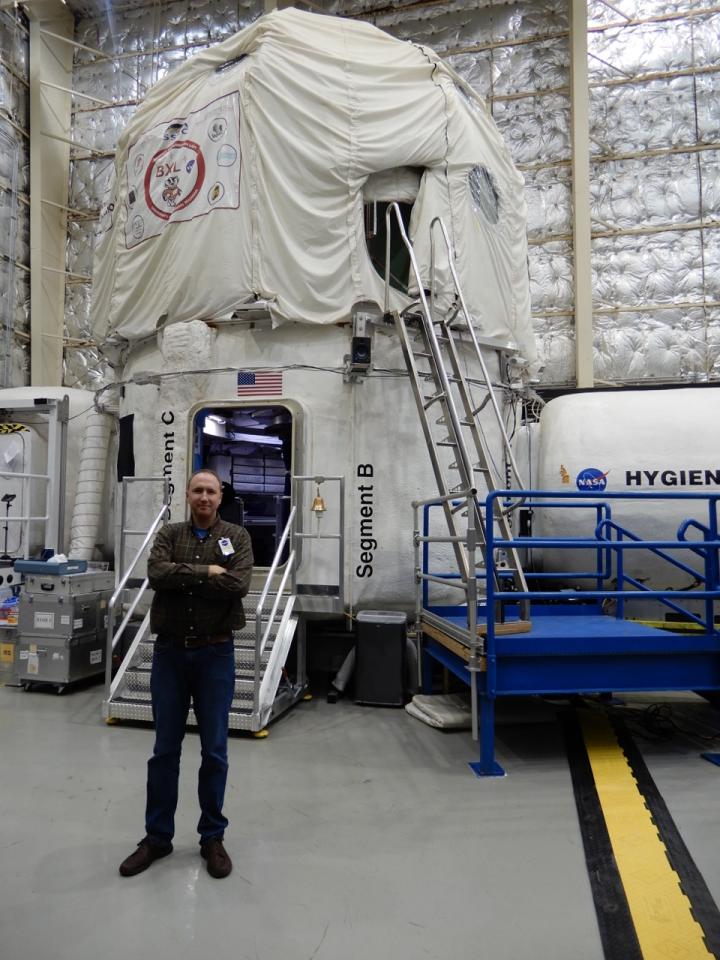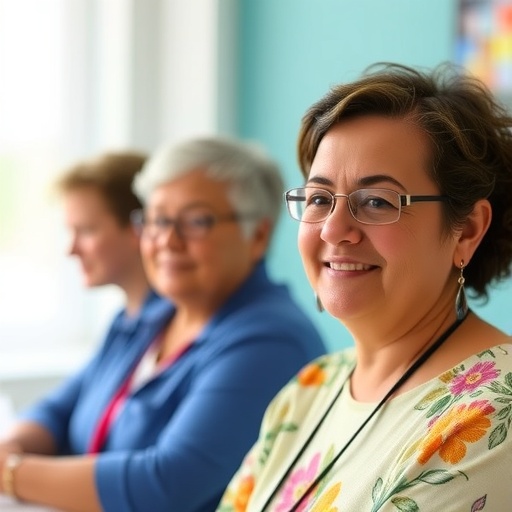
Credit: Will Daniels
AMHERST, Mass. – Geoscientist Will Daniels, a postdoctoral researcher at the University of Massachusetts Amherst's Climate System Research Center, is set to embark on the trip of a lifetime this month as part of an experiment for NASA, spending 45 days away from Earth as he knows it, without ever leaving the ground.
Daniels is one of just four research participants chosen from applicants across the nation to take part in NASA's 17th Human Exploration Research Analog (HERA) mission at the Johnson Space Center in Houston. As the agency describes it, HERA is a three-story, closed-habitat environment designed to serve as an analog for the isolation, confinement and remote conditions in exploration scenarios. It is one of several ground-based analogs the space agency uses "to research ways to help astronauts move from lower-Earth orbit to deep space explorations."
Daniels says, "I'd love to be an astronaut, and for some, participating in a research analog mission like HERA is an important stepping stone to becoming an astronaut. In any case, I'm really happy to be able to contribute to the research on human adaptations during space travel and exploration. I'm really, really excited, and a little nervous," he adds.
"I'm nervous about getting along in confined space with the other crew members, and I wonder what it will be like not to be able to go outside for 45 days. I think Ground Control is going to keep us pretty busy, but I'm bringing books and board games in case there's down time. We won't have email or any usual contact with the outside world, but I do get to call my mom in Minnesota for 15 minutes every other week."
HERA XVII crew members will be expected to fly their "spacecraft" for several hours a day wearing virtual reality goggles to simulate real effects such as motion sickness, Daniels says. They will eat only freeze-dried food, the same menu and diet as astronauts on the International Space Station, and will have 30 "hygiene minutes" per day for laundry in the sink, a shower and bathroom privileges. "I have to be ready to poop in a bag to measure my gut microbiome," the geoscientist says, wrinkling his nose. More seriously, "the main goal is to optimize the quality of life and work flow for future astronauts, and continually examine the best way to organize a space ship."
Another of the challenges for the four habitat dwellers – in addition to Daniels, a female Air Force pilot, a female NASA intern, and a male university professor – will be having sleep limited to five hours per night, five nights a week, to assess possible effects on performance and group dynamics. The protocol allows a recovery period of two weekend nights where they can sleep eight hours, but no naps and limited caffeine.
The crew will be monitored visually through their flight, including facial scans to determine their feelings and frustrations, for example, and "once a week we have to stick our arms out the wall and a nurse we can't see will draw our blood for tests," Daniels says.
The mission begins this month in Houston with two weeks of training outside the HERA habitat, followed by 45 days of a simulated mission to an asteroid to collect rock samples – three weeks out and three weeks back – beginning on May 5. "As I understand it, if we arrive safely at the asteroid, they shove some rocks through a door and we collect them for the return flight," Daniels notes. A final week of de-briefing closes the mission.
He will be released on June 25 and hopes to return immediately to "regular life," studying climate change in remote locations such as Alaska, Russia and Greenland, with geosciences department chair Julie Brigham-Grette and associate professor Isla Castaneda. Daniels, who came to UMass Amherst last September after earning his Ph.D. in geosciences and climate change at Brown University, says, "I'm very grateful that Isla and Julie are supportive of me taking this once-in-a-lifetime opportunity. I couldn't do it without their support."
Daniels first heard about the HERA program from his friend Tess Caswell, whom he calls "a passionate space scientist, who absolutely loved her experience" as a HERA XI crew member. He applied a year ago, and six months later took the medical and psychological screening, which was "two days of being poked and prodded with difficult questions," he says. "I found out only in March that I had been selected. In some ways I can't believe I'm going to do it, but overall I'm really looking forward to it."
###
Media Contact
Janet Lathrop
[email protected]
413-545-2989
@umassscience
http://www.umass.edu
Original Source
http://www.umass.edu/newsoffice/article/umass-amherst-geoscientist-nasa-mission





